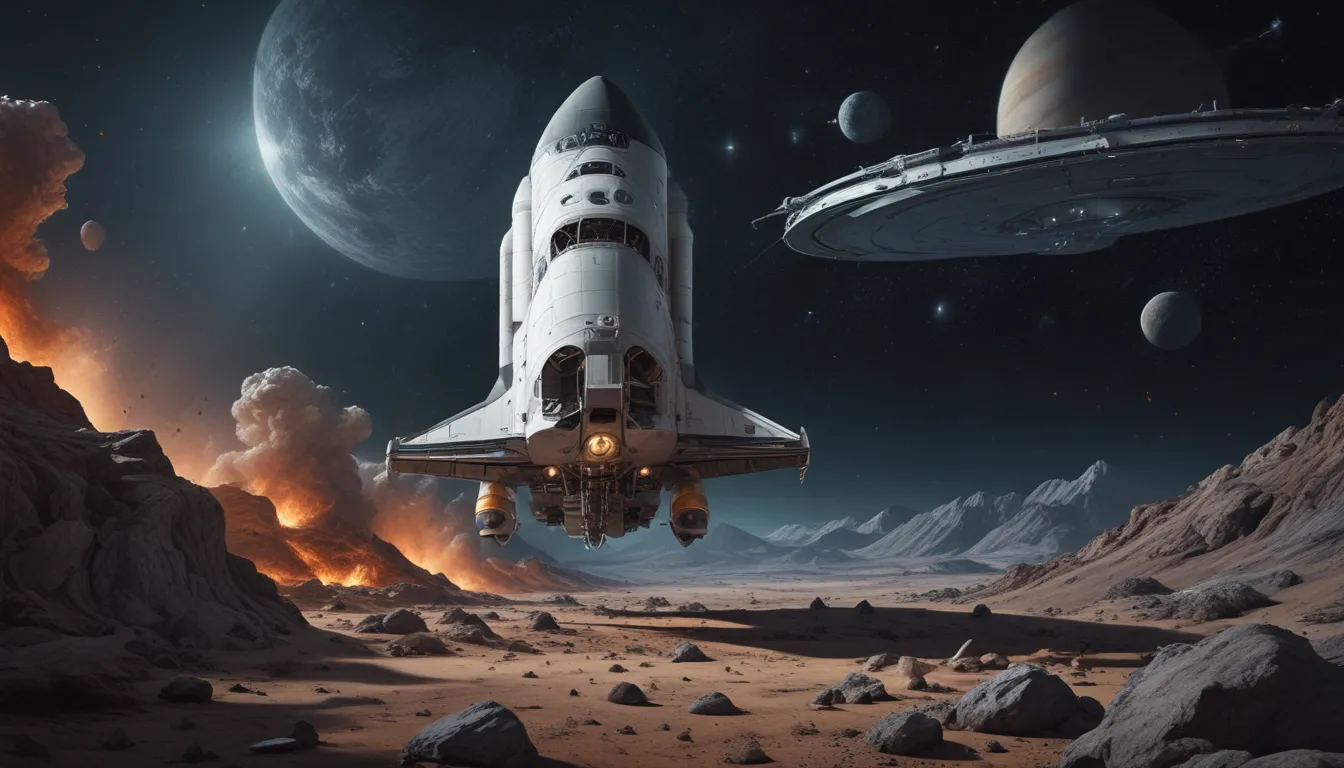A Note About Images: The images used in our articles are for illustration purposes only and may not exactly match the content. They are meant to engage readers, but the text should be relied upon for accurate information.
Are you fascinated by the wonders of space and the incredible achievements of human exploration? If so, then join us as we dive into the fascinating world of NASA – the National Aeronautics and Space Administration. From its humble beginnings in 1958 to its groundbreaking missions and discoveries, NASA has been at the forefront of space exploration and scientific advancement. Join us as we uncover the essential facts, explore interesting tidbits, and delve into the vast universe of NASA.
Uncovering NASA’s Origins
Let’s start our journey by looking back at the origins of NASA. Established on July 29, 1958, in the United States, NASA officially opened its doors for business on October 1 of the same year. However, the world had already been introduced to the wonders of space by the Soviet Union, which launched the world’s first artificial satellite, Sputnik 1, a year prior. With 9 centers, 7 test and research facilities, and the renowned Jet Propulsion Laboratory, NASA has grown to become a pioneer in space exploration, employing over 17,000 dedicated individuals.
Essential NASA Facts
- NASA: The acronym stands for National Aeronautics and Space Administration.
- Mission: NASA is responsible for overseeing air- and space-related science and technology in the United States.
- Objective: The primary goal of NASA is to lead space exploration and aeronautics research in the U.S.
- Headquarters: Located in Washington, D.C., NASA’s headquarters serves as the central hub for the organization’s operations.
- Funding: NASA receives its annual federal budget from the U.S. Congress to support its various missions.
- Space Age: The start of the Space Age can be traced back to 1957 when the Soviet Union launched Sputnik.
- World Space Week: Declared by the United Nations, this official week commemorates the launch of Sputnik and the 1967 Outer Space Treaty.
- Apollo Missions: NASA’s Apollo missions to the moon included Apollo 11, 12, 14, 15, 16, and 17.
- Space Shuttle: The Space Shuttle can take up to 7 astronauts and essential cargo to space, traveling from the Vehicle Assembly Building to the launch pad in around 6 hours.
Diving Deeper into NASA’s Achievements
Delving into the remarkable achievements of NASA, we discover a world of innovation, exploration, and scientific endeavor. From launching the Landsat series in 1972 to studying the Earth from space to pioneering missions like Mercury, Gemini, and Apollo, NASA has left an indelible mark on human history.
- Landsat Series: Launched in 1972, the Landsat series aimed to systematically photograph the Earth’s surface from space.
- Spacecraft Landings: Mercury, Gemini, and Apollo spacecraft landed in the Atlantic and Pacific Oceans upon returning to Earth.
- Bell X-1 Flight: Capt. Charles E. Yeager flew the Bell X-1, breaking the sound barrier for the first time in October 1947.
- Apollo 10: The command module for Apollo 10 was named ‘Charlie Brown,’ while the lunar module was called ‘Snoopy.’
- Educational Outreach: NASA provides a wealth of educational materials for educators, students, and the scientific community on various topics.
- Johnson Space Center: Established in 1961, the Johnson Space Center has been at the forefront of human space exploration.
- Space Shuttle Missions: NASA’s missions, including the Space Shuttle program, have paved the way for groundbreaking discoveries and advancements in space exploration.
Charting NASA’s Future
Looking ahead, NASA continues to push the boundaries of human exploration and scientific discovery. From preparing for new missions to setting records with groundbreaking launches, NASA remains at the forefront of space exploration.
- International Space Station: NASA is an integral part of the International Space Station, a multinational construction project involving 15 countries.
- SpaceX Launch: NASA’s partnership with SpaceX marks a new era in human spaceflight, with astronauts like Douglas Hurley and Robert Behnken piloting historic missions.
- Climate Change Studies: NASA’s research on climate change confirms the impact of greenhouse gases on global warming and highlights various aspects of climate change.
- Astronaut Selection: Aspiring astronauts must meet stringent qualifications, including 1,000 hours of flying time and relevant academic backgrounds.
- Space Exploration: While astronauts capture the spotlight, NASA’s workforce comprises a diverse range of professionals contributing to the organization’s success.
Illuminating NASA’s Legacy
As we reflect on NASA’s legacy, we appreciate the dedication, innovation, and collaborative spirit that have driven the organization’s remarkable achievements. From groundbreaking missions to pioneering discoveries, NASA’s impact on space exploration and scientific research is truly unparalleled.
Whether you’re a space enthusiast, a budding scientist, or simply curious about the wonders of the universe, NASA’s legacy continues to inspire and captivate us. Join us on this extraordinary journey through the cosmos as we celebrate the remarkable achievements of NASA and the endless possibilities of space exploration.






